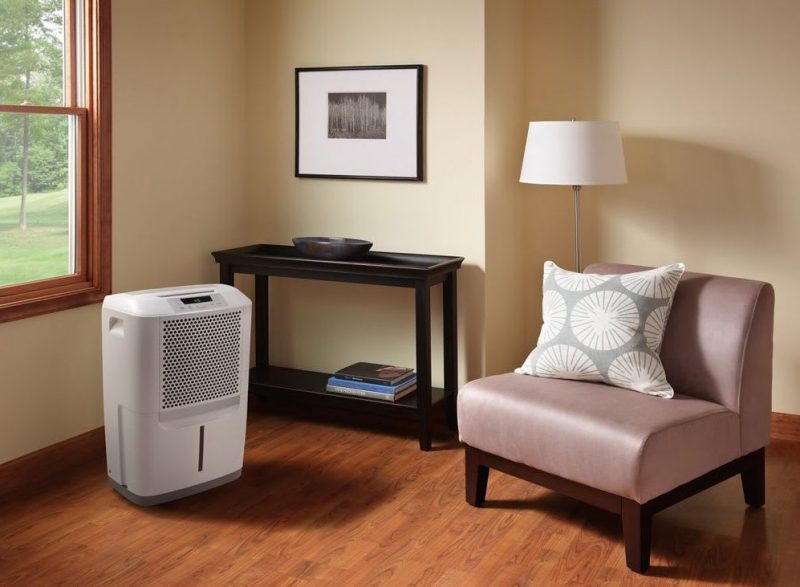There are 3 aspects’ effects of food on the human body, namely: nutritional function , sensory function, and regulatory function.
Do you know the food industry also needs dehumidifiers? Let’s see below.
Classification Of Food Function
1.Nutritional Function
Means food can provide nutrients and energy needed by the human body and meet the nutritional needs of the human body. It is the main function of food.
2. Sensory Function
Means food can meet the requirements of people’s different hobbies, like, the requirements of color, aroma, taste, shape, and texture of food.
Good sensory traits can stimulate taste and smell, stimulate taste buds, stimulate the secretion of digestive enzymes and digestive juices, so it can increase appetite and stabilize mood.
3. Regulatory Function
Means food can have a good regulating effect on the human body, such as regulating the physiological rhythm of the human body, improving the immunity of the body, lowering blood pressure, lowering blood lipids, lowering blood sugar, and so on.
Such as celery can lower blood pressure, kelp can lower blood pressure and cholesterol, walnut can strengthen the brain, mung beans can heat-clear and detoxify effect, and so on.
Therefore, any food with a regulatory function is called functional food or health food.
Foods Production Needs Dry Condition
Some foods’ production process requires the interior of equipment or the room environment kept relatively dry, such as chocolate, candy, flour, dehydrated vegetables, seasonings, puffed foods, milk powder, yeast, food additives, nutrients, etc., if in a humid environment, this kind of food is easily caked by moisture, or affects the taste and quality, causing losses or unpleasant feelings to producers and consumers.

Chocolate
The water in food called combined or unbound water, and this water is the water content in the equilibrium state. On the contrary, the unbound water is the excess water in the equilibrium state; during the drying process, water evaporates from the solid surface, causing the change of water vapor partial pressure difference between the solid interior and the solid surface, resulting in the transfer of water from the solid interior to the surface, thus reducing the moisture content of the food material and achieving the purpose of drying.
As the saying goes–“illness enters through the mouth”. So to ensure the quality and safety of food is very important for people’s diet safety.
From raw materials, processing equipment to production technology, if food is in a humid environment for a long time, very easy to be contaminated by mold, resulting in the total number of food colonies exceeding the standard, affecting the quality and safety of products.
Therefore, the Dehumidifier has advantages in adjusting the humidity of the workshop and ensuring the safety of food production.
See the short video of dehumidifier using in food industry.
Enjoy↓
Bacteria And Cleanliness Of Products
Total number of bacteria is the main index to evaluate the cleanliness of products.
The total number of food colonies is not up to standard, and general problems arise in the links of production, storage, transportation, sales, etc.
For food production, the cause of the problem is likely the pollution of raw materials, personnel, equipment, and environment in the production process.
Among them, the humidity in the food processing workshop is a “hotbed” for colony reproduction and growth.
Most food safety problems mainly occur in the process of food production, storage, and circulation. If environmental humidity of the workshop is not suitable, it will affect the foods quality.
In addition, all kinds of food production processes will use water, which makes the workshop a certain degree of dampness.
Meanwhile, the processing and storage of food have strict environmental temperature and humidity requirements, inappropriate relative humidity (RH) is very easy to breed mold and other bacteria rapid reproduction, growth, and then cause varying degrees of food pollution, so that the total number of food colonies exceed the standard.
So the food processing workshop should be moisture-proof, mildew-proof, avoid the total number of product colonies exceeding the standard, and ensure the quality and safety of food.
Moisture has a great impact on the production of the food industry, if there are no timely and effective protective measures, it will have a certain impact on the economic benefits of food processing enterprises.
As the standards of temperature and humidity control in food production workshops are different according to different production processes, different foods have different standards.
Dehumidifiers can help food-processing enterprises to adjust the humidity of the workshop according to the production demand to ensure the safety of food production.
Important Aspects of Snacks in Humidity Control
In the food processing industry, some foods are more vulnerable to humidity damage than others, and fast food snacks are one of them.

Snack
Snacks are eaten out of taste value rather than nutritional value.
As a result, these processed foods focus on using techniques such as frying, baking, and sugar coating to increase the taste.
It is very important to ensure a controlled environment of the food packaging area and to prevent moisture from entering the packaging and packaging environment.
There are 4 important aspects of snacks in humidity control:
1. Tightness
Tight food increases the size of the food, which is usually reduced by the presence of moisture.
If the humidity is not properly controlled during processing and packaging, it may become moist and lose its expected quality during the period from the factory to the customer.
2. Rancidity
Snacks are usually made from oil. Fatty acids usually react with oxygen, resulting in a condition often referred to as “rancidity”, which produces a bad taste.
Although the control of humidity by dehumidifier doesn’t eliminate acidification because the key problem is oxidation rather than moisture, controlling humidity can weaken the acidizing process.
3. Caking
Moisture can cause food to adhere to each other.
If the candy is in a caked state when opening a new package, it will be unacceptable from the customer’s point of view.
In addition, some seasonings and raw materials need to control the relative humidity (RH) to ensure that they don’t cake, thereby improving work efficiency. And ensure product quality.
4. Bacterial degradation
This is the biggest reason for the use of dehumidifiers in food industry.
All foods are based on carbohydrates, proteins, and fats.
If exposed to moisture, they begin to hydrolyze food and form bacteria/fungi that can grow slowly on it.
During the shelf life of the product, even if there is no oxygen, the anaerobes will continue to grow.
These hidden dangers of food safety may not only bring serious consequences to manufacturers but also endanger the health of customers.
Dehumidifier Maintains the Dry Environment
Using dehumidifiers to maintain a dry environment in the processing and packaging areas is a good way to reduce the moisture risk.

Humidity of Workshop
While controlling the relative humidity within the ideal range of 40%~60%RH, it is essential to control and maintain temperature, CO2, ventilation, and aseptic controllable environmental methods.
Combined with quality control and packaging technology, we can ensure the product is always safe and healthy.
Dehumidifiers generally can be divided into 2 categories: Civil Dehumidifier and Industrial Dehumidifier, while food processing enterprises mainly use industrial dehumidifiers.
For food production workshops, the temperature, humidity, cleanliness of the production environment, the choice of water source for processing, the equipment of the laboratory, and the control of the flow of people, logistics, water flow, and airflow are closely related to the production.
Moreover, if a machine is in a humid and rusty environment for a period of time, its working capacity and working life will be greatly reduced.
By controlling humidity of the environment, industrial dehumidifier reduces the absorption of food to the air humidity of the workshop and effectively avoids the problems of mildew, caking, adhesion, and freezing in the process of food processing, which, to a certain extent, reduces food caking and adhesion blocking food processing equipment, ensures the normal operation of the production line, ensures the stability of quality, saves energy, and improves production capacity.
In fact, whether it is food production and processing, or food machinery and equipment manufacturing, there are certain requirements for temperature and humidity in the workshop. Whether the temperature and humidity are properly controlled is the key to ensuring the safety and hygiene of food production and processing and ensuring the stable operation of food machinery and equipment, reducing the frequency of equipment failures, and prolonging the service life of the equipment.
If the temperature and humidity in the workshop are too high, it is easy to breed bacteria and microorganisms, and the total number of bacteria exceeds the standard due to food contamination.

Workshop Dehumidifier
Generally speaking, the humidity in the food processing workshop is maintained at 40-60%, otherwise, the microorganisms in the workshop are more active and multiply faster, and pastry, bread, dairy products, and other products are easy to breed bacteria and mold, resulting in excessive bacterial colonies and accelerating the deterioration of the products.
For the food machinery and equipment workshop, the relative humidity is about 45%-70%. If the humidity is high, the machine surface is easy to form a water film, metal oxidation corrosion may occur for a long time, resulting in an increased frequency of equipment failures.
The industrial dehumidifier has become an important help for food production and processing enterprises to dehumidify and keep dry and clean in the workshop.
However, the use of industrial dehumidifier should also pay attention to cleaning and maintenance, so as to ensure the dehumidification efficiency and effect of the equipment next time.
Generally, the dehumidifier draws air into the dehumidifier, and after a long time, the filter will cover with a lot of dust. If the dust is too thick, it will affect the air intake effect.
Air intake becomes smaller, air output and dehumidification efficiency will become worse.
Cleaning And Maintenance of Industrial Dehumidifier
Therefore, the industrial dehumidifier should do a good job of cleaning and maintenance in order to improve the use effect of the equipment and prolong the service life of the industrial dehumidifier.
You should pay attention to switch maintenance, and filter maintenance.

Dehumidifier for food
Some Tips:
1. Industrial dehumidifier shouldn’t switch on and off frequently, but can be started and turned off through the humidity controller.
2. After the industrial dehumidifier is closed, do not restart immediately, otherwise, the starting current may be too large, burn the fuse, or even burn the compressor motor.
3. Usually, the industrial dehumidifier is ventilated and the air passes through the filter to purify the air initially.
4. If you use the equipment for a long time, the filter net is bound to be covered with dust.
If the dust is too thick, will affect the air intake effect and reduce the dehumidification efficiency.
Of course, you can contact the dehumidifier suppliers helping with the cleaning and maintenance, they will show you the key points on how to do that correctly.
Conclusion
Dehumidifier is very important for the food industry. Therefore, it is also very important to you, because you will eat different foods every day. If the food goes bad and moldy or does not taste, it will affect your mood even your health. So you need to understand a series of knowledge about food dehumidifiers, which will definitely help you.
Just take action now to get rid of the wet interference around you.
Any comments?
Welcome leave a message or repost.



